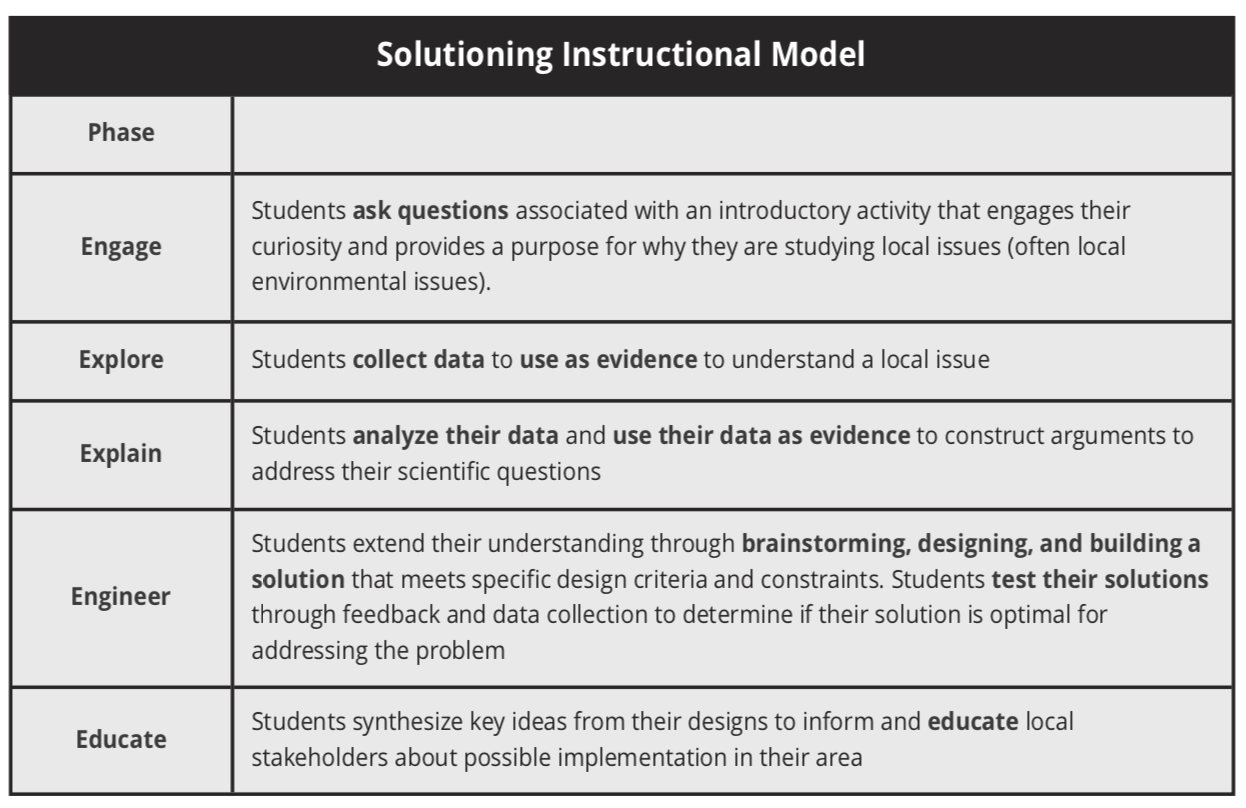We need STEM knowledge programs in formal and informal settings that guide learners in applying STEM learning to the creation of solutions
COP27, the Conference of the 197 nations following the United Nations conventions on Climate Change, has resulted in multinational cooperative agreements on addressing climate-fueled disasters and the transition to renewable energy. To realize results, these agreements rely on interdisciplinary solutions with foundations in science, technology, engineering, and mathematics (STEM).
For the future design of a water filtration system to increase the availability of potable water or other solutions, we need STEM knowledge and education programs that guide learners in applying STEM learning to the creation of solutions. As a recent policy document outlined, “Scientific thinking and understanding are essential for all people navigating the world, not just for scientists and other STEM professionals. They enable people to address complex challenges in local communities and at a global scale, more readily access economic opportunity, and rein in life-threatening problems such as those wrought by a global pandemic.” (NRC, 2021a). To emphasize the need even further, a President of the National Academy of Sciences stated, “Today, unless we can spread both scientific thinking and these critical scientific values much more broadly throughout society, I fear for humanity’s survival.” (Alberts, 2022).
STEM knowledge needs to be prioritized in education
This urgency needs to be reflected in the priority placed on science education in formal educational settings. A recent study found that programs in US elementary schools average 20 minutes per day of science, a few days a week (NRC, 2021b). When science instruction exists, it often does not provide opportunities for epistemic agency, i.e., the ability of students to shape the knowledge and practices of their learning within their classroom (Miller et al., 2018). Pre-university STEM Education programs must support students in harnessing their intellectual and creative resources. These programs might start with asking questions and engaging in scientific investigations, but they do not end there. Content learning is extended through problem definition, brainstorming problem solutions, and the enactment and testing of solutions.

Could solutioning be the answer?
To address this challenge, we designed a learning approach, Solutioning, that guides youth to deepen science content through science and engineering practices. Next, we created a six-week curricular program that manifested the learning approach and provided opportunities for students to use engineering design to create and provide feedback on a trap design that would attract a local invasive insect that was harmful to their community.
Student trap designs considered the phase of the life cycle of the invasive insect, pheromones or lures to attract their insect, trap placement, and the construction of a cost-effective trap that can be maintained over time. Some traps were designed to look like their natural environment, such as a young tree, while others emphasized particular oils, fruit, or other attractants known to attract their insect.

Two traps designed to mitigate local invasive insects
We conducted research studies to provide empirical evidence on student STEM knowledge and learning and their ability to define science and engineering. Research results indicate that even elementary-age students demonstrate significant improvement in their understanding of STEM arguments as evaluated with a pre-post assessment before and after implementing a six-week solutioning curricular program (e.g., Songer and Ibarrola Recalde, 2021).


We need to understand how adolescents think
Understanding adolescents’ perceptions of science and engineering is necessary to foster holistic conceptions of science and the application of scientific knowledge through engineering design. New research explores the quality and characteristics of students’ solutions and their ability to define and provide articulate examples of science and engineering before and after the curricular program.
Additionally, we are examining students’ motivation to learn science and engineering and quantitatively analyzing any potential changes in interest or understanding throughout the curricular program. In these ways, we have begun to develop empirical information on the value of solutioning programs. As we have only begun this conversation, we welcome collaborators who wish to help us all to understand pre-university students’ scientific thinking and critical scientific values toward individuals well-prepared to realize solutions to tomorrow’s interdisciplinary problems.
References
- Alberts, B. (2022) Why science education is more important than most people think. FEBS Letters, 596(2), 149–159.
- Miller, E., Manz, E., Russ, R., Stroupe, D., & Berland, L. (2018) Addressing the epistemic elephant in the room: Epistemic agency and the next generation science standards. Journal of Research in Science Teaching, 55, 1053–1075.
- National Research Council [NRC]. (2021a). Call to action for science education: Building opportunity for the future. National Academies Press.
- National Research Council [NRC]. (2021b). Science and engineering in preschool through elementary grades: The brilliance of children and the strengths of educators. National Academies Press.
- Songer, N.B., and Ibarrola Recalde, G., (2021) Eco- Solutioning: The design and evaluation of a curricular unit to foster students’ creation of solutions to address local socio-scientific issues. Frontiers Educ. 6:642320. doi:10.3389/feduc.2021.642320

This work is licensed under Creative Commons Attribution-NonCommercial-NoDerivatives 4.0 International.


